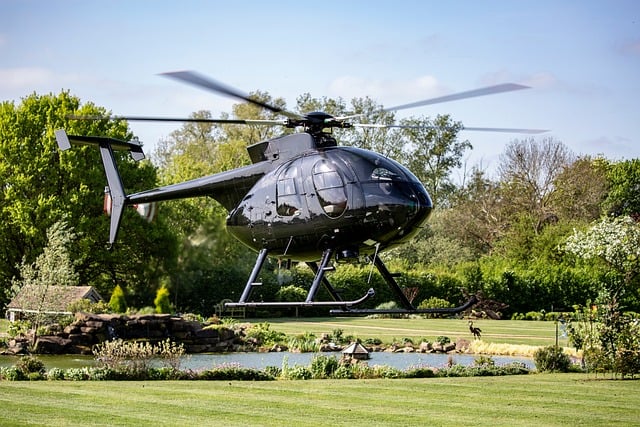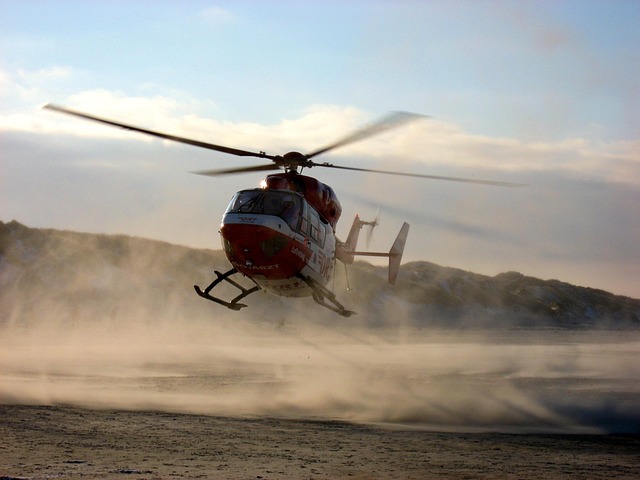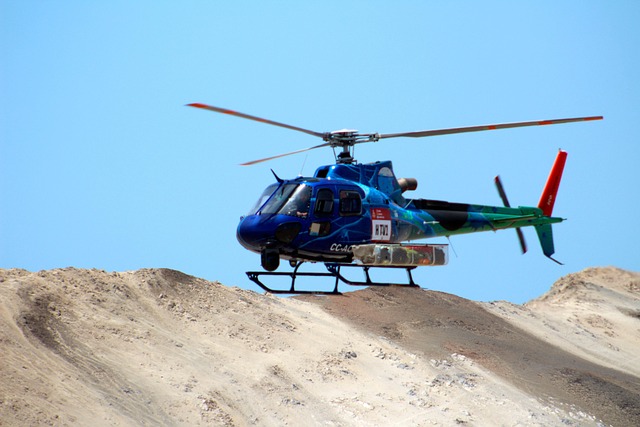The future of urban mobility is taking to the skies with the rise of helicopter flights and vertical take-off and landing (VTOL) aircraft, offering efficient, direct routes through congested city centers. This technology reduces travel times, enhances connectivity, and could reshape city planning. Integrating helicopter flights into urban landscapes presents opportunities for innovative architecture, such as suspended platforms and airborne gardens, while also requiring stringent safety measures, advanced air traffic management systems, and sustainable practices like electric VTOL helicopters to ensure safe and seamless operations.
“Imagine soaring through a futuristic cityscape, not just as a passenger but as part of its dynamic infrastructure. This article explores the burgeoning trend of urban air mobility, where helicopter flights transform city travel. We delve into the revolutionary designs that elevate architecture to new heights in the sky, while ensuring safety and sustainability remain paramount. Discover how these innovations redefine urban landscapes, offering efficient, eco-conscious transportation solutions.”
- The Evolution of Urban Air Mobility: A New Perspective on City Travel
- Designing for the Sky: Architectural Wonders in the Air
- Safety and Sustainability: Shaping the Future of Helicopter Flight in Cities
The Evolution of Urban Air Mobility: A New Perspective on City Travel

The concept of urban air mobility is transforming the way we envision city travel. What was once a futuristic dream is rapidly becoming a reality, as innovative technologies like vertical take-off and landing (VTOL) aircraft and advanced helicopters redefine urban transportation. These aircraft offer efficient, direct routes through congested cityscapes, allowing commuters to bypass traffic jams and reduce travel time significantly.
Imagine navigating the air currents above bustling metropolis, soaring over towering skyscrapers and sleek architectural marvels. Helicopter flights provide a dynamic perspective, offering passengers a unique sensory experience as they glide effortlessly from one destination to another. This new dimension of urban mobility promises to enhance connectivity, promote sustainability by reducing road congestion, and potentially reshape the very fabric of city planning.
Designing for the Sky: Architectural Wonders in the Air

In the realm of futuristic cityscapes, designing for the sky opens up a world of architectural possibilities. As we envision cities of the future, towering skyscrapers may no longer be enough to captivate our imagination. Instead, we look towards the skies, where structures that defy gravity and incorporate helicopter flights into their fabric become the new norm. These aerial wonders not only offer breathtaking views but also transform urban living by integrating transportation seamlessly with habitation.
Helicopter flights play a pivotal role in this innovative landscape, allowing for vertical connectivity and enabling residents to navigate through the city as effortlessly as they move on its streets. Architects are exploring designs that feature suspended platforms, rotating habitats, and even airborne gardens, all while ensuring safety and comfort for those who dare to live among the clouds. This fusion of technology and design promises a future where the sky is not just a limit but a vibrant, bustling domain in its own right.
Safety and Sustainability: Shaping the Future of Helicopter Flight in Cities

As cities evolve and urbanize, integrating helicopter flights into their landscapes presents both exciting opportunities and significant challenges. Safety remains paramount; designing robust air traffic management systems and implementing stringent safety protocols are essential to mitigate risks associated with aerial navigation in heavily populated areas. Advanced technology, such as sophisticated sensors, collision avoidance systems, and autonomous flight capabilities, plays a crucial role in ensuring secure operations.
Sustainability is another critical aspect that shapes the future of helicopter flights in cities. Electric vertical take-off and landing (eVTOL) helicopters offer a promising solution by reducing noise pollution and carbon emissions. Urban planners must consider the environmental impact of these flights, encouraging the development of eco-friendly aircraft and infrastructure to support sustainable urban mobility. By balancing safety measures with innovative technologies, futuristic cityscapes can accommodate seamless helicopter flight operations, transforming urban transportation and opening new avenues for urban living.
As we explore the potential of futuristic cityscapes, it’s clear that urban air mobility, particularly via helicopter flight, is no longer a concept of the future—it’s an emerging reality. From evolving designs that redefine aerial architecture to safety and sustainability initiatives ensuring responsible growth, the sky is no longer the limit for urban transportation. As cities adapt to include helicopters in their landscapes, we can expect a new era of efficient, eco-conscious travel, transforming the way we navigate our urban environments.
